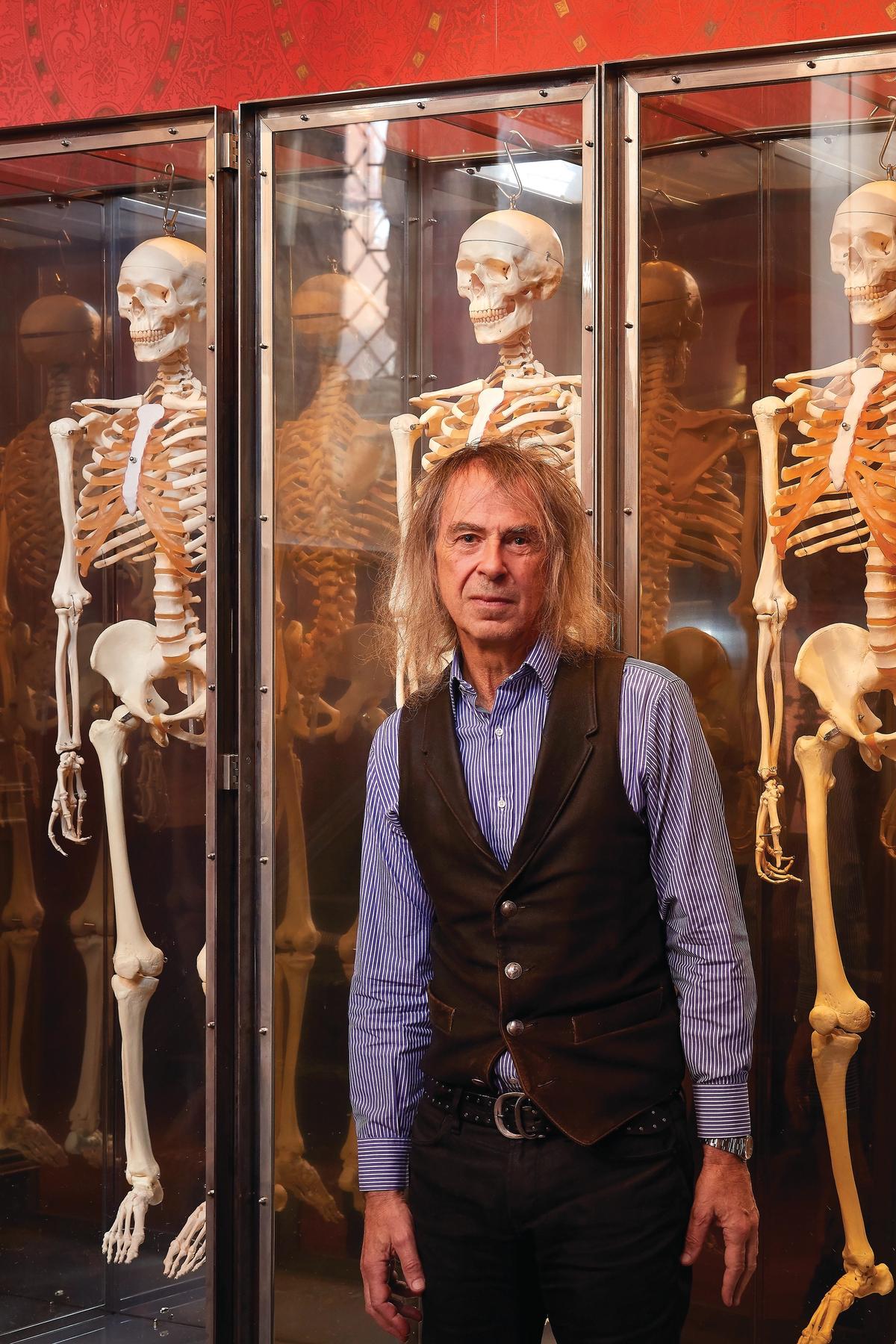A London dealer who operates from his art-filled home in Chelsea rather than a gallery, Ivor Braka has also brought his “catholic” collecting tastes to the pair of country pubs he owns in north Norfolk. Works by the likes of Lucian Freud, Tracey Emin, Paula Rego and Damien Hirst line the walls of the award-winning Gunton Arms, opened in 2011, which was followed this summer by the nearby Suffield Arms. “In the absence of religion, pubs are incredibly important to stave off loneliness and give a sense of community,” he says.
Before the pubs, however, was Braka’s decades-long involvement in the restoration of Norfolk’s Gunton Park, a Georgian landscape where he and his fellow landowners have planted 800,000 trees and reintroduced a deer herd. From this personal interest in ecology, Braka says he “naturally leapt at the opportunity” to become a major patron of the Gallery Climate Coalition.
The Art Newspaper:What was the first work you bought?
Ivor Braka: A Wyndham Lewis drawing from the Mayor Gallery around 1974-75, when I’d just left [the University of] Oxford. I’d been reading a lot about Ezra Pound and T.S. Eliot, and thought that Lewis’s draughtsmanship was sublime.
What is your most recent buy?
I bought a ceramic sculpture at Art Basel by a Native American woman artist, Rose B. Simpson, from Jessica Silverman. I thought the whole stand had a numinous aura to it. I’m not religious but it had a spirituality. Before that, the most important work of art I bought was a painting by Zurbarán.
Where do you keep your works?
I rotate them. My house in Chelsea has quite a lot of things; the rest is with other galleries, or [storage company] Crozier or at the pubs.
If your house was on fire, which work would you save?
Probably Jacob Epstein’s Rock Drill drawings—I’ve got three of them. I’d be hard pushed to choose between those and Red Duet, a wonderful Wyndham Lewis. Epstein’s works are prophetic of not only the mechanised slaughter of the First World War but of industry, symbolised by the road drill, dominating nature. It’s very anticipatory of the ecological problem the world’s facing now.
If money were no object, what would be your dream purchase?
It would be the Godwin cabinet. [Edward William] Godwin designed Oscar Wilde’s house and Whistler’s house. He was one of the initiators of the cult of Japan in England. The last Godwin cabinet I saw was sold by Jimmy Page of Led Zeppelin to a museum in Florida. But selecting only one object is very mood-dependent—as difficult as choosing your favourite piece of music.
Which artists, dead or alive, would you invite to your dream dinner party?
Francis Bacon. He had tremendous charm and charisma, and he was witty, cruel and devastatingly intelligent.
What’s the best collecting advice you have been given?
To ignore the object’s material cost and simply judge it on its own merit.
Which work do you regret not buying when you had the chance?
There are so many because however rich you are, you’ve never got enough cash. Among the multitude, it would probably be a 1930s Mondrian painting, which I bought at Christie’s seven years ago but which I stupidly allowed a close friend to buy in my stead, when I could have kept it for myself.
Who is your favourite artist who deals with environmental themes?
For sheer power of observation, I would say the watercolours of John Ruskin. It’s his capacity to observe things so closely, be it a waterfall or the wing of a bird or a botanical specimen. Moving to today, I admire Roni Horn and in particular her majestically poetical sculpture, Library of Water, in Iceland. The artist collected water from different glaciers and placed it in glass columns which refract light according to the mineral composition of the water, causing subtle colour variations.
What can collectors do to be more climate-conscious?
Travel less is the first thing that comes to mind. We’re all guilty of that, myself included.
Have you bought an NFT?
No. And it’s unlikely I would because I think it’s about currency trading. As I’m a tech dinosaur, I may be missing the point.


